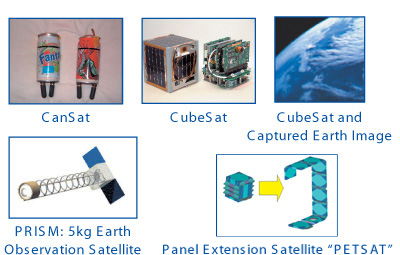 |
 |
|
|||||||||||||||||||||||||
|
| Exploration natural resources and use of space energy ―In search of unknown energy resources― |
| See-bed Resources Exploration |
 Tamaki Ura, Professor Tamaki Ura, ProfessorDepartment of Environmental and Ocean Engineering Since 1984, Ura laboratory, Institute of Industrial Science, the University of Tokyo is continuing R&D activities of the Autonomous Underwater Vehicles (AUVs). AUV "r2D4", completed in July 2003, is the latest version of the ocean-cruising type AUV of our group, major missions of which are automatized investigation of ocean resources and undersea singular regions, such as hydrothermal vents. Since its launch, "r2D4" has already completed a few undersea missions, e.g., full autonomous survey of Rota underwater volcano, located at Mariana back-arc basin within Mid-west Pacific. In May 2005, "r2D4" is planned to be deployed at Myojinsho off Izu-Ogasawara Islands. As the result of this mission, numerous valuable information about deep sea hydrothermal vents are hopefully to be obtained, which are known to have close relation with undersea earthquakes and volcanic activities. |
 |
| Nano-Satellites |
 Shinichi Nakasuka, Professor Shinichi Nakasuka, ProfessorDepartment of Aeronautics and Astronautics We have been studying nano-scale satellites of 0.5kg to 5kg. We launched the world smallest satellite named "CubeSat" (1kg, 10cm cubic) successfully in June 2003, which has been operated on orbit for more than one and half year. Besides, 350ml juice-can sized satellite "CanSats" have been developed. While the national space development seems to come to dead-end because of enormous cost (several million US $ per satellite) and extremely long development time (3-5 years), we are pursuing much lower development cost and much shorter development time for satellites in order to open novel ways of space utilization. Nano-Satellites require different architecture, different ways of achieving certain functions and different players from those for conventional satellites. We are carrying out joint satellite projects with Higashi-Osaka small companies to realize a novel satellite concept "PETSAT," studying how to deploy small satellite into a large one on orbit, and developing nano-scale Earth observation system suited for nano-satellites. Hand-made nano-satellites are also providing us with excellent material for practical space engineering education, and its tremendous effects not only on technological training but also on project management training for large scaled project has been observed. |
 |
Page top |